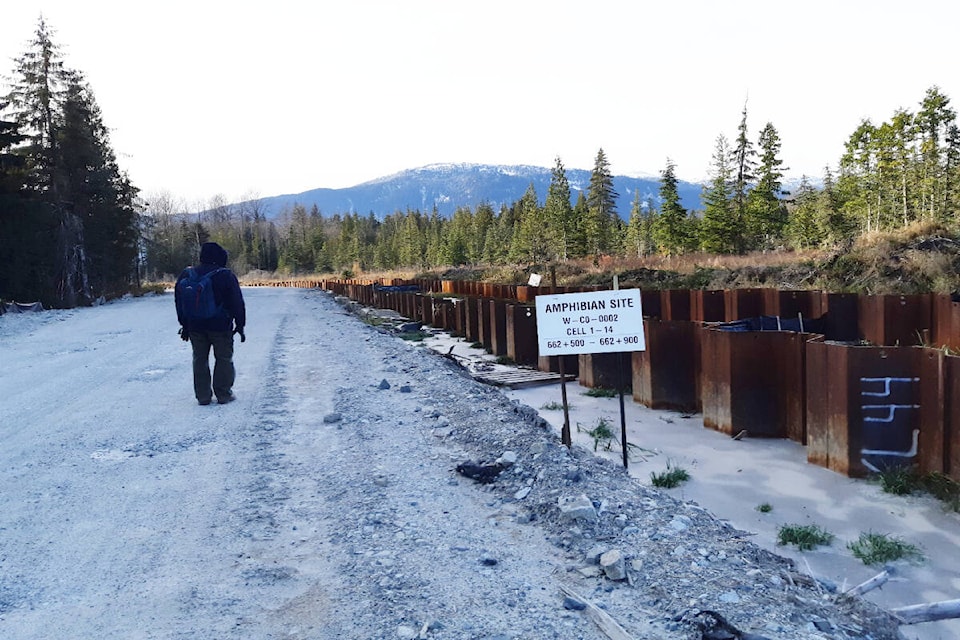Two local environmentalist groups are raising concerns about the Coastal GasLink (CGL) pipeline construction in a letter sent to B.C.’s energy regulator.
In the letter, the Kitimat Valley Naturalists (KVN) and Douglas Channel Watch (DCW) say CGL pipeline construction is affecting the migration of amphibians in the Kitimat wetlands.
The groups claim that a high, continuous, above-ground steel barrier installed by CGL work crews has disrupted the natural movement of wildlife in the area. The steel barrier, which extends for about one kilometre along the Kitimat Hospital/Strawberry Meadows wetland, has only two small openings for water flow.
The structure has hindered the migration of amphibians and other small wildlife, including martins and rabbits, according to the two groups.
Five species of amphibians, including the northwestern salamander, long-toed salamander, rough-skinned newt, Columbia spotted frog and western toad, have not been seen at or near the site during the past two seasons, the groups said.
READ MORE: Regulators probe complaint about sediment flow at CGL pipeline river crossing in northwest B.C.
CGL construction started in 2019.
Walter Thorne, a KVN and BC Nature board director, contacted CGL to address the issue.
During a conference call, CGL representatives acknowledged the barrier as a temporary obstacle to migration and assured that efforts would be made to remove it in time for spring migration. However, KVN remains concerned about the timeline and whether there are guarantees that the barriers will be removed.
In a statement to Black Press Media, a CGL spokesperson said the barrier is temporary and that “once construction is complete, the work site is restored to allow wildlife and amphibians access across the project route.”
The company also added that an earthen berm will be built over the pipe to protect it and create a slight slope so amphibians can cross.
The groups question the feasibility of this solution, given the difficulty small creatures may face in traversing such an obstacle.
The CGL statement also said that on-site pipeline crews salvaged and relocated 725,000 amphibians found on the roadway to what they deemed “suitable release sites within or as close to their source as possible.”
However, KVN argues that these relocation efforts were inadequate, as the amphibians were not moved upslope where they were attempting to migrate.
The Kitimat Valley Naturalists and Douglas Channel Watch are calling for a more thorough assessment of the situation and increased consultation with local experts to mitigate the impact on the wetland ecosystem.
viktor.elias@terracestandard.com
Like us on Facebook and follow us on Twitter.
